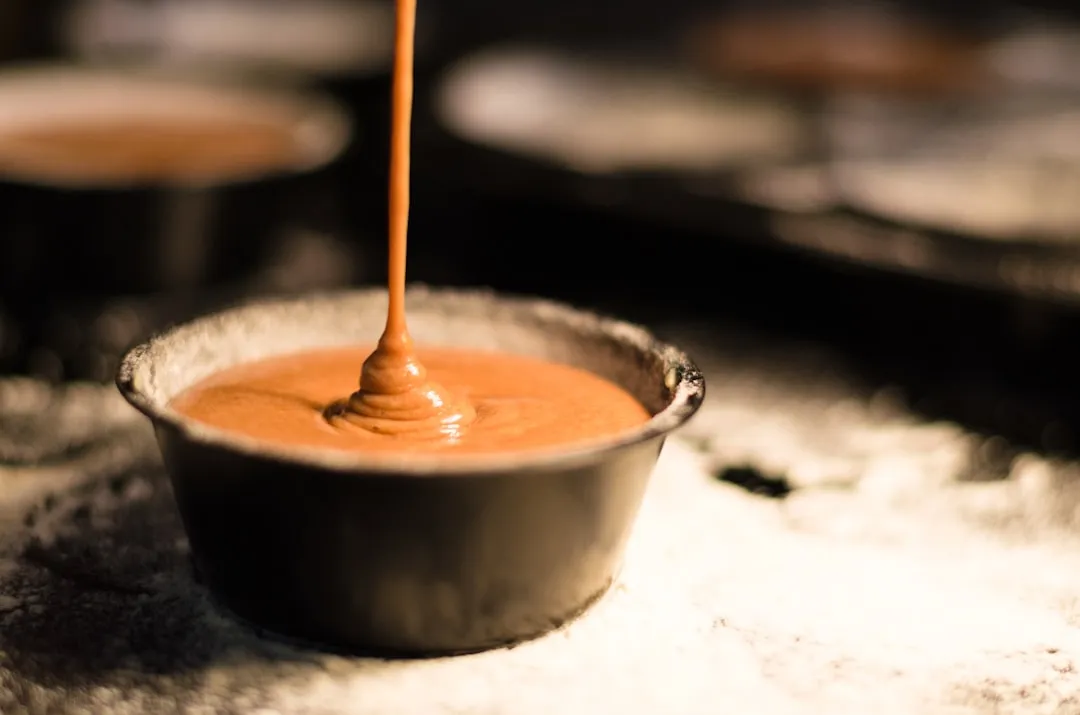If you spend a lot of time reading about food, chances are you've heard about bone broth. It's all the rage these days, from high profile chefs like Marco Canora building menus around it, to celebrities like Salma Hayek using it as self-prescribed beauty regimens.
Bone broth is touted by many for its delicious flavor and supposed health benefits. There are even places now that sell bone broth like tea or coffee–by the glass, to be sipped as is. Some people–most famously basketball superstar Kobe Bryant–preach that a glass of bone broth a day helps rebuild broken bones and tendons.
Whether you believe its health and beauty benefits or not, one thing's sure: bone broth is very popular and delicious.
What Is Bone Broth Exactly?
Bone broth is a broth made by roasting and simmering beef, lamb, and/or other animal bones. These bones should have connective tissue on them and most likely be cracked to help get marrow out. They are filled with minerals that are released into the broth as they cook, and the flavor is much heartier than a traditional stock or broth because of all the collagen that is released.

A cup of Marco Canora's famous bone broth at Brodo.
The health benefits are said to be greater in bone broth, though there is no scientific evidence anywhere just yet to back up that last claim—despite "bone broth" having been around for a very long time before it became a recent fad.
How Does It Compare to Regular Stock/Broth?
Broth usually contains meat, whereas stock has bones. So the name "bone broth" is a bit confusing in that it's actually flip-flopped. But "bone stock" doesn't sound quite as appetizing, does it?
Aside from that technicality, the primary difference between bone broth and standard broth or stock is the amount of cooking time. Broth usually cooks for 45 minutes to 2 hours, which helps give it its light, flavorful taste. Stock is usually 3-6 hours, which is needed to help extract the collagen from the bones and connective tissue and give it that gelatin-like texture. Bone broth, on the other hand, should cook at least four hours, but it's even better to go for 24 hours or longer, unless you want something similar to regular stock.

Beef bones ready to go. See that marrow and connective tissue?
In addition to cooking time, bone broth is usually more minimalistic than regular stock or broth, as fewer ingredients are added. Between the cooking time and the lack of additional ingredients, bone broth ends up having a stronger, meatier flavor, and some will say more health benefits as well.
What Are the Pros & Cons of Bone Broth?
While bone broth has become extremely popular, it's not without its controversies. Many people swear by the broth, and claim that it can fix medical issues and dramatically increase bone strength and general health, while also helping skin and sleep patterns. Critics of bone broth claim that it's no more than a glorified stock and that people should not turn to it expecting any crazy medical benefits.
The reality is somewhere in the middle. On the bright side, bone broth does have a lot of healthy components. The bones of lambs and cows are filled with minerals and proteins, and ingesting these is very healthy. Whether you drink bone broth plain, or use it as a substitute for traditional broth or stock, you're going to get a product that is chalk-full of important minerals.
However, many bone broth claims have been debunked by science. The most common belief surrounding broth is that it helps bone growth because it's full of collagen, which is what we need in our healthy bones. Unfortunately, ingesting collagen in no way impacts the collagen levels in your bones; it will simply go straight through your system like most foods. If healthy bones are what you're looking for, a glass of milk is a much better route than a glass of bone broth.
How Do You Make It?
Making bone broth is very easy. It takes a lot of cooking time, but the recipe itself couldn't be easier.
Ingredients
- lamb or beef bones (any bones work: shanks, knuckles, heads, etc.)
- 1 onion (peeled and quartered)
- 3 garlic cloves (peeled)
- 1 Tbsp. whole peppercorns
- 2 Tbsp. apple cider vinegar
- salt to taste
Gather Your Bones
You can start with as many bones as you would like, assuming you have a large enough stockpot. Technically, you can use bones other than those from a lamb or a cow, but the effects won't be quite the same, and there won't be as big of a difference between your bone broth and a traditional stock.
To get your bones, simply go to the butcher and ask for some broth bones.

Brady Klopfer/Food Hacks Daily
Roast the Bones
Place the bones on a rimmed cookie sheet or roasting tray and place them in an oven at 450°F. Roast the bones until they are a deep brown–at least 20 minutes.

Brady Klopfer/Food Hacks Daily
Add the Rest of Your Ingredients
Place the bones in a stock pot or Dutch oven, and add the garlic, onion, peppercorns, and vinegar. You can add any other herbs or vegetables that you want, but I'm in favor of keeping it simple, because traditional stock ingredients like carrots, celery, and bay leaves tend to overpower the meaty flavor when the broth is cooked for so long.

Brady Klopfer/Food Hacks Daily
Add Water & Cook
Add enough water to cover the bones, then bring the broth to a boil. Once the water boils, lower the heat so that the broth is simmering softly. Simmer the broth for at least 4 hours, but preferably at least 10. If you have the time, simmer the broth overnight (bone broths sold at restaurants usually simmer 24-48 hours).
Strain & Store
When the broth is nearly finished, add salt to taste, then strain out the bones and aromatics. Chill the broth as quickly as you can (adding a few ice cubes is the best way), then bottle it and put it in the fridge. It's important to chill the broth quickly because warm food is a hotbed for bacteria.

Brady Klopfer/Food Hacks Daily
Bone broth may not be the magical health potion that some make it out to be, but it's still a relatively healthy and wildly delicious food. It's worth making, especially since bones are so cheap to buy, and the broth is so easy.
- Follow Food Hacks Daily on Facebook, Twitter, and Instagram
- Follow WonderHowTo on Facebook, Twitter, and Google+
More Delicious Food Fads:
- Reviews Are In… Does the Raindrop Cake Live Up to the Hype?
- The Buzz on Bee Pollen Benefits
- Make Cereal Milk—A Momofuku-Inspired Drink
- Rainbow Bagels Are Taking the Country by Storm
Cover photo by The Meat Case/Flickr

























Comments
Be the first, drop a comment!